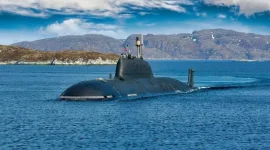- Views: 2K
- Replies: 12
A recent debate on the social media platform X (formerly Twitter) has ignited discussions about the development of India's Air Independent Propulsion (AIP) system for submarines.
While some claim that the technology is entirely indigenous, others argue that the French Naval Group played a crucial role. This article aims to clarify the facts surrounding the development and integration of this critical technology.
The Defence Research and Development Organisation (DRDO) has officially stated that the AIP system, based on fuel cell technology, was developed by its Naval Materials Research Laboratory (NMRL) in collaboration with Indian companies like Larsen & Toubro (L&T) and Thermax. This assertion aligns with India's ongoing efforts to achieve self-reliance in defence technology.
However, some defence analysts and online commentators have pointed to the involvement of the French Naval Group, suggesting that the company played a significant role in either the development or integration of the AIP system. They highlight a January 2023 agreement between DRDO and Naval Group, focusing on the French company's responsibility for certifying the AIP design for integration into India's Kalvari class submarines.
The reality is more nuanced than either side of the debate suggests. While DRDO, through NMRL, has indeed led the development of the fuel cell-based AIP, the French Naval Group's involvement has been primarily focused on integration and certification. The agreement with Naval Group was crucial to ensure the indigenous AIP system could be seamlessly and safely integrated into the Kalvari class submarines, which are derived from the French Scorpène class.
This collaboration exemplifies a strategic approach that combines indigenous development with international cooperation for technology transfer and knowledge sharing. DRDO successfully developed the core AIP technology, while the French Naval Group's expertise was essential for ensuring its practical implementation within the existing submarine design.
Statements from both DRDO and Naval Group support this understanding. DRDO officials have consistently emphasized the indigenous nature of the AIP development, while Naval Group representatives have highlighted their role in the integration process. For instance, Pierre Eric Pommellet, Chairman & CEO of Naval Group, has publicly expressed pride in their cooperation with Indian stakeholders to ensure the safe integration of the AIP system.
In conclusion, the fuel cell-based AIP technology for Indian submarines is indeed a product of DRDO's research and development efforts, with significant contributions from Indian industry partners. However, the French Naval Group played a vital role in the subsequent integration and certification phase, ensuring the technology's successful deployment in the Kalvari class submarines.
This distinction between development and integration is crucial for a comprehensive understanding of modern defence projects, where national self-reliance and international collaboration often go hand-in-hand. The ongoing debate on social media, while highlighting the importance of this technology, often overlooks this critical difference.

